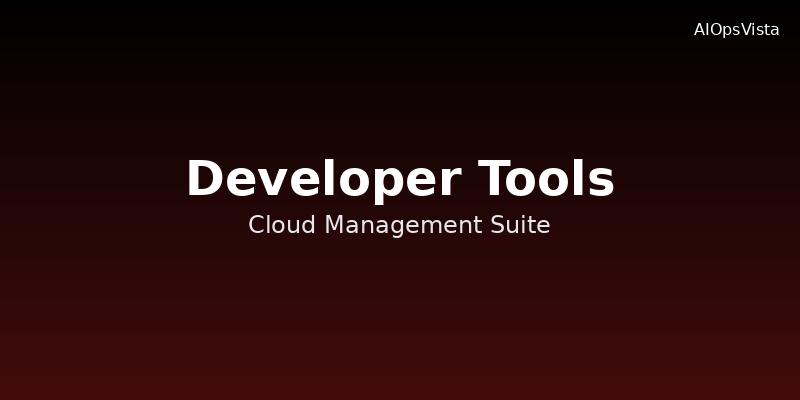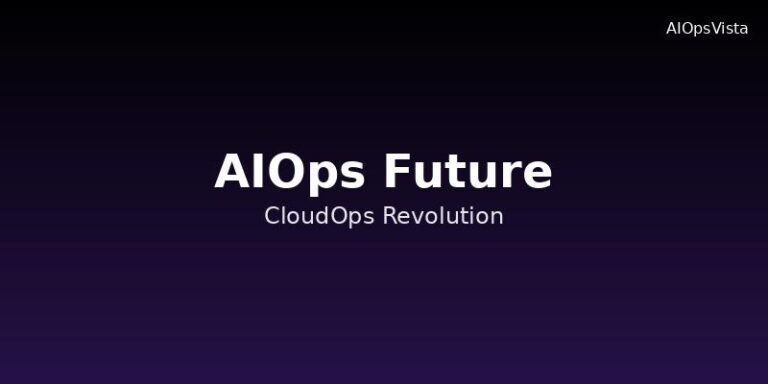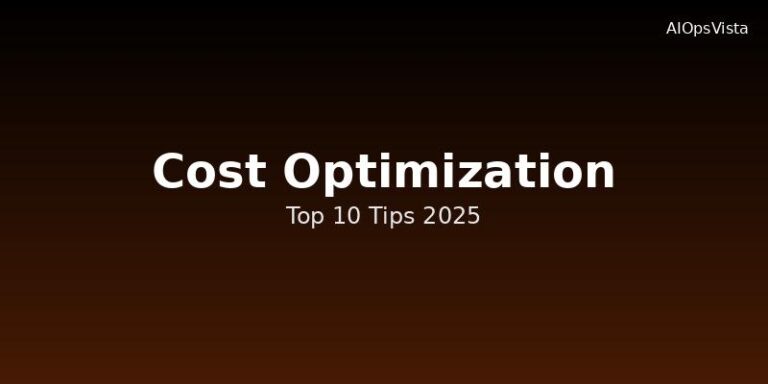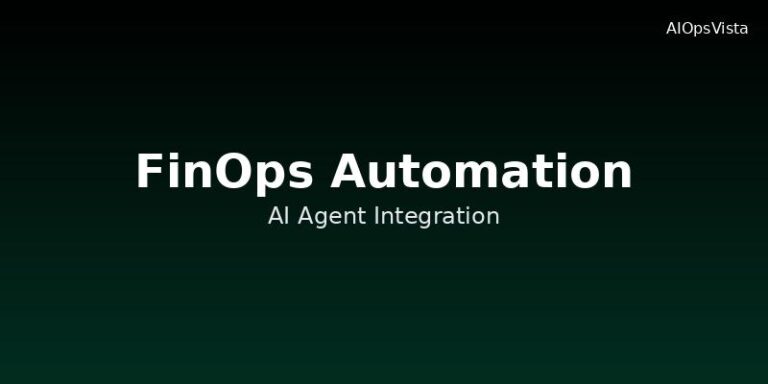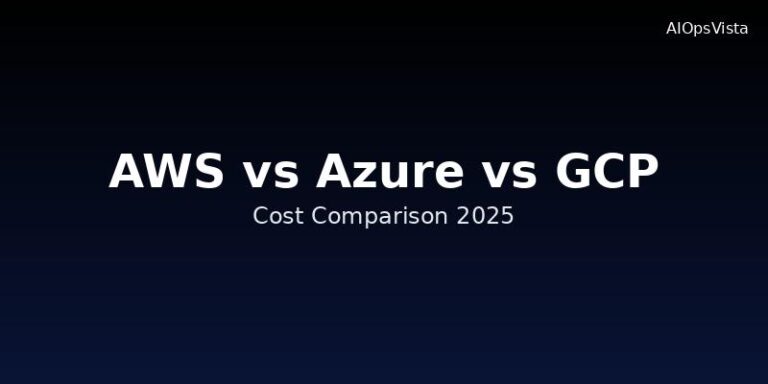5 Developer Tools to Simplify Cloud Management in 2025
5 Developer Tools to Simplify Cloud Management in 2025
As cloud infrastructure becomes increasingly complex, developers need powerful tools to manage, monitor, and optimize their cloud resources effectively. In 2025, a new generation of developer tools is emerging that combines ease of use with powerful automation capabilities. Here are five essential tools that every cloud developer should know.
1. Cloud Cost Estimator
Overview
Cloud cost estimation tools have evolved from simple calculators to intelligent platforms that provide real-time cost comparisons across multiple cloud providers. These tools use AI to analyze your infrastructure requirements and provide accurate cost projections.
Key Features
- Multi-cloud comparison: Instant cost comparisons between AWS, Azure, and GCP
- AI-powered analysis: Natural language processing to understand infrastructure descriptions
- Real-time pricing: Up-to-date pricing data from official provider APIs
- Detailed breakdowns: Itemized costs for compute, storage, networking, and data transfer
Use Cases
- Planning new infrastructure deployments
- Comparing migration costs between cloud providers
- Budget planning for development projects
- Optimizing existing infrastructure costs
Why It Matters for Developers
Understanding cloud costs early in the development process helps teams make informed architectural decisions and avoid cost overruns. Modern cost estimators provide the insights needed to build cost-effective solutions from the start.
2. Infrastructure as Code (IaC) Platforms
Overview
IaC tools have matured significantly, offering more than just resource provisioning. Modern IaC platforms include intelligent planning, automated testing, and cost optimization features.
Popular Tools in 2025
Pulumi
Pulumi stands out for its support for multiple programming languages and its ability to manage complex, multi-cloud infrastructure.
- Multi-language support: TypeScript, Python, Go, C#, and Java
- Cloud-agnostic: Single codebase for multiple cloud providers
- Policy as Code: Automated compliance and cost governance
- Testing framework: Unit and integration testing for infrastructure
Terraform with AI Extensions
Terraform continues to evolve with AI-powered features for infrastructure optimization.
- AI-assisted planning: Intelligent resource recommendations
- Cost-aware deployments: Automatic cost optimization suggestions
- Drift detection: Advanced monitoring of infrastructure changes
- Module marketplace: AI-curated infrastructure components
Developer Benefits
- Faster development cycles: Rapid infrastructure provisioning
- Consistent environments: Reliable deployments across dev, staging, and production
- Version control: Infrastructure changes tracked alongside code
- Collaboration: Team-based infrastructure development
3. YAML & JSON Validators
Overview
Configuration files are the backbone of modern cloud infrastructure. YAML and JSON validators have evolved to include AI-powered suggestions, security scanning, and best practice recommendations.
Advanced Features
- Syntax validation: Comprehensive error checking and reporting
- Schema validation: Kubernetes, CloudFormation, and ARM template validation
- Security scanning: Identification of security misconfigurations
- AI suggestions: Intelligent recommendations for optimization
- Multi-format support: YAML, JSON, TOML, and HCL validation
Integration Capabilities
- IDE integration: Real-time validation in VS Code, IntelliJ, and other editors
- CI/CD pipelines: Automated validation in GitHub Actions, GitLab CI, Jenkins
- Git hooks: Pre-commit validation to prevent configuration errors
- API endpoints: Integration with infrastructure management platforms
Why Developers Love Them
Configuration errors are a major source of deployment failures. Modern validators catch issues early, provide actionable feedback, and help developers learn best practices through AI-powered suggestions.
4. Uptime and Performance Monitoring Tools
Overview
Modern uptime monitoring goes beyond simple ping checks. These tools provide comprehensive performance insights, predictive analytics, and automated remediation capabilities.
Key Capabilities
- Multi-location monitoring: Global monitoring from multiple geographic locations
- Real user monitoring (RUM): Actual user experience tracking
- Synthetic monitoring: Simulated user journeys and API testing
- Performance metrics: Detailed timing for DNS, TCP, SSL, and content delivery
- Alert intelligence: AI-powered alert prioritization and noise reduction
Advanced Features in 2025
- Predictive alerting: Forecast potential outages before they occur
- Automated remediation: Self-healing capabilities for common issues
- Business impact analysis: Correlation between technical metrics and business outcomes
- AI anomaly detection: Machine learning-based unusual pattern identification
Developer Integration
- API access: Programmatic access to monitoring data
- Webhook integrations: Real-time notifications to Slack, Teams, and other tools
- Custom dashboards: Developer-specific views and metrics
- Incident management: Integration with Jira, ServiceNow, and other ITSM tools
5. IP & DNS Lookup Tools
Overview
Network diagnostics tools have evolved to provide comprehensive network intelligence, including geolocation, security analysis, and performance optimization recommendations.
Comprehensive Analysis
- DNS records: Complete DNS record enumeration (A, AAAA, CNAME, MX, TXT, NS)
- IP geolocation: Geographic location, ISP, and network information
- SSL certificate validation: Certificate chain validation and security analysis
- Network diagnostics: Traceroute, latency, and routing analysis
- Security assessment: IP reputation, blacklist checking, and threat intelligence
Advanced Capabilities
- CDN detection: Identification of content delivery networks and optimization suggestions
- IPv6 readiness: IPv6 support assessment and migration planning
- Performance optimization: Network performance tuning recommendations
- Compliance checking: GDPR, CCPA, and other regulatory compliance validation
Developer Use Cases
- Troubleshooting connectivity issues: Diagnose network problems quickly
- Security validation: Check IP reputation and SSL certificate validity
- Performance optimization: Identify network bottlenecks and optimization opportunities
- Compliance auditing: Ensure regulatory compliance for data handling
Integration and Workflow Automation
Unified Developer Experience
The best cloud management tools in 2025 offer seamless integration with popular developer workflows:
- IDE integration: Direct access from VS Code, IntelliJ, and other development environments
- CLI tools: Command-line interfaces for automation and scripting
- API-first design: RESTful APIs for custom integrations and automation
- GitOps integration: Infrastructure changes managed through Git workflows
CI/CD Pipeline Integration
Modern tools integrate deeply with continuous integration and deployment pipelines:
- Automated testing: Infrastructure and configuration testing in CI pipelines
- Policy enforcement: Automated compliance checking and remediation
- Cost monitoring: Budget checks and alerts in deployment pipelines
- Security scanning: Automated security assessment and vulnerability scanning
Choosing the Right Tools
Assessment Criteria
When evaluating cloud management tools, consider these factors:
- Multi-cloud support: Ability to manage resources across different cloud providers
- Ease of use: Learning curve and developer experience
- Integration capabilities: Compatibility with your existing toolchain
- Cost and licensing: Total cost of ownership and licensing model
- Security and compliance: Data handling and regulatory compliance
- Scalability: Ability to handle large-scale deployments
Team Size Considerations
- Small teams: Focus on ease of use and comprehensive features
- Growing teams: Prioritize scalability and collaboration features
- Enterprise teams: Emphasize governance, compliance, and integration capabilities
The Future of Cloud Developer Tools
AI and Machine Learning Integration
AI will continue to enhance developer tools with:
- Intelligent code generation: AI-assisted infrastructure code writing
- Predictive optimization: Proactive performance and cost optimization
- Automated troubleshooting: AI-powered root cause analysis
- Personalized recommendations: Tailored suggestions based on usage patterns
Low-Code and No-Code Options
Visual and low-code interfaces will make cloud management accessible to more team members:
- Drag-and-drop interfaces: Visual infrastructure design
- Template marketplaces: Pre-built infrastructure components
- AI-assisted configuration: Automated setup and optimization
Edge Computing and IoT Support
Tools will expand to support edge computing and IoT deployments:
- Distributed infrastructure management: Managing resources across edge locations
- IoT device management: Specialized tools for IoT infrastructure
- Real-time analytics: Edge-native monitoring and analytics
Getting Started
Implementation Strategy
- Assess current needs: Identify pain points in your current cloud management workflow
- Start with core tools: Begin with cost estimation and IaC tools
- Integrate gradually: Add monitoring and validation tools incrementally
- Automate workflows: Connect tools through APIs and automation scripts
- Train your team: Ensure all developers understand the new tools and processes
Best Practices
- Standardize tooling: Use consistent tools across all projects and teams
- Implement governance: Establish policies for tool usage and infrastructure standards
- Monitor adoption: Track tool usage and gather feedback for continuous improvement
- Stay updated: Regularly review new features and tool updates
Conclusion
The cloud management landscape in 2025 offers developers powerful tools that simplify complex tasks while providing deep insights and automation capabilities. By adopting these five essential tools—cloud cost estimators, IaC platforms, configuration validators, monitoring tools, and network diagnostics utilities—development teams can significantly improve their productivity, reduce errors, and optimize cloud costs.
The key to success lies in choosing tools that integrate well with your existing workflow, provide the right level of automation for your team’s needs, and offer room for growth as your cloud infrastructure evolves. Start small, focus on solving immediate pain points, and gradually build a comprehensive cloud management toolkit that supports your development team’s success.
Ready to simplify your cloud management? Try our suite of developer tools designed specifically for modern cloud workflows.

